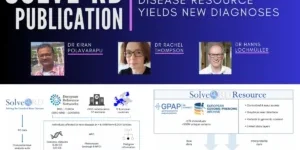New Publication: Neuromuscular Junction Changes in a Mouse Model of Charcot-Marie-Tooth Disease Type 4C
Our recent publication on Neuromuscular Junction Changes in Charcot-Marie-Tooth Disease Type 4C (CMT4C) is now available online at the International Journal of Molecular Sciences (Open Access). In this paper we used a variety of techniques including immunofluorescence and proteomics to investigate muscle from a mouse model of CMT4C with the aim of identifying mechanisms that contribute to the disease pathology.
Read the full paper on the IJMS website here.
Abstract:
The neuromuscular junction (NMJ) appears to be a site of pathology in a number of peripheral nerve diseases. Charcot-Marie-Tooth (CMT) 4C is an autosomal recessive, early onset, demyelinating neuropathy. Numerous mutations in the SH3TC2 gene have been shown to underlie the condition often associated with scoliosis, foot deformities, and reduced nerve conduction velocities. Mice with exon 1 of the Sh3tc2 gene knocked out demonstrate many of the features seen in patients. To determine if NMJ pathology is contributory to the pathomechanisms of CMT4C we examined NMJs in the gastrocnemius muscle of SH3TC2-deficient mice. In addition, we performed proteomic assessment of the sciatic nerve to identify protein factors contributing to the NMJ alterations and the survival of demyelinated axons. Morphological and gene expression analysis of NMJs revealed a lack of continuity between the pre- and post-synaptic apparatus, increases in post-synaptic fragmentation and dispersal, and an increase in expression of the gamma subunit of the acetylcholine receptor. There were no changes in axonal width or the number of axonal inputs to the NMJ. Proteome investigations of the sciatic nerve revealed altered expression of extracellular matrix proteins important for NMJ integrity. Together these observations suggest that CMT4C pathology includes a compromised NMJ even in the absence of changes to the innervating axon.







